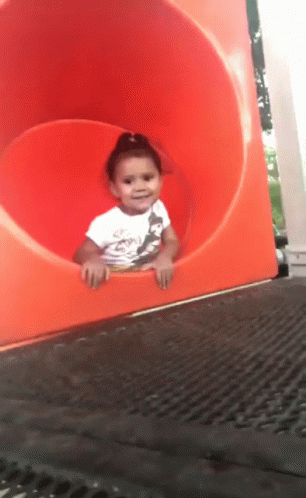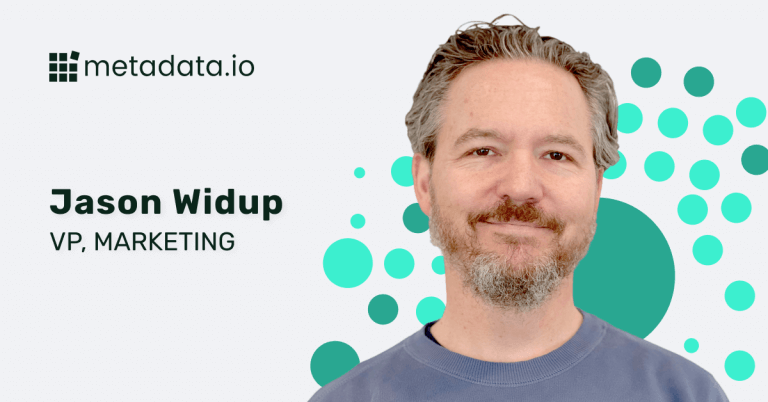What I Learned From Launching A New Website
We had a big Metadata milestone two weeks ago.
We said goodbye to our old website—so long gradients.

We overhauled our messaging. And we introduced a new brand identity that most B2B software companies would have shot down a long time ago.
We now have a website that genuinely reflects who we are, our personality, and what makes us unique in a crowded ABM category.
None of this was easy. It was a beast.
So here’s what you need to know if you’re planning to wrestle this beast at your own company. Or just looking for the CliffNotes version like my high school self would.
- Don’t start with the website
- Flip the focus of your messaging
- Test your messaging out with different audiences
- Good design should make you feel uncomfortable
- Take risks so you can stand out
Don’t start with the website
This might sound odd but hear me out.
Towards the end of last year, I started to push (aka annoy) Jason about our website.
It didn’t reflect who we were, it didn’t speak to our customers, and it didn’t support our Sales team. It spoke to us and our tech.
So after more pushing (aka he was now completely annoyed with me) – I got him to sign off on having me redo our website.
Naturally, I wanted to start with the website. I created a new sitemap, defined our capabilities, and put together an SOW with our digital creative agency.
I thought this would be a quick little redesign because I knew what to say and how to say it. Until I didn’t.
I shared my plan with a few of our customer advisory board members to get their initial take. Thankfully, they told me they thought about Metadata and our product in a different way.
This led to me pausing the website and instead focusing on our messaging.
If you start with the website, you’ll get it all wrong. Start by talking with your customers, then more customers, and then prospects. Trust me.
Flip the focus of your messaging
I scheduled close to 15 different conversations with the exact type of marketer I needed to get the attention of: B2B marketers held accountable to pipeline and revenue.
I met with three groups of people: our best customers, new customers and late-stage prospects in our pipeline. And let them do most of the talking (like actually).
I started with these five questions:
- Why did you buy Metadata? / Why are you considering Metadata?
- How does using Metadata make your life easier?
- What would your life be like without Metadata?
- How would you describe Metadata to other marketers in your network?
- Where does our current messaging fall flat?
I felt like I had struck gold by getting their responses to these questions.
It forced me to forget everything I knew about our product and what I wanted to say. Because it’s not about what I wanted to say, it’s about what they wanted to hear.
So rather than focus on our new messaging on Metadata and what it does, I focused on our audience and reframed our messaging using their own words.
It’s a slight nuance with an enormous impact.
Your messaging will 100% fall flat if it’s only focused on your tech. Don’t focus on what your software does; focus on how it makes your customers’ lives easier.
Test your messaging out with different audiences
All of the conversations I had were incredibly helpful. But I still felt like I had a serious blind spot.
All of the people I had met with were either 1) very familiar or 2) somewhat familiar with Metadata. I needed to get feedback from people who had zero idea what Metadata was.
We stumbled on Peep Laja‘s new company, Wynter, to help us address our blind spot.
B2B marketers like me use Wynter to get feedback on the messaging from the people they’re marketing to.
You pick the type of creative you’re looking to get feedback on (landing page vs. ad vs. email) and then select the type of audience you need input from.
In our case – we tested the same landing page against two different audiences (our primary personas).
- Directors of Marketing at SaaS companies
- VPs of Marketing at SaaS companies
From there, you can highlight specific sections on the landing page you’re most interested in getting feedback on with questions like:

- What’s your first reaction after reading this section?
- What about this page is unclear or off-putting?
- What about this page resonated with you?
Some of what we found confirmed we were on the right track with our messaging.
Some of what we found also confirmed we needed to simplify more. And strip the buzzwords that make our skin crawl.
We took any feedback that was consistent across both cold audiences and revised our messaging, so it could stand on its own. Regardless of how familiar someone is with Metadata.
Get your messaging in front of both warm and cold audiences. There’s enormous value in getting feedback from both.
Good design should make you feel uncomfortable
If you ever checked out our old website, you could tell very quickly neither Jason nor I were designers. We worked with a few freelancers and even tried out 99Designs.
All of the design output felt very vanilla. It was firmly in our comfort zone.
And if you’ve been following Metadata at all, you know vanilla is the exact opposite of who we are.
We teamed up with Algert, a digital creative agency, who has helped build brands like Drift and Privy (you may have heard of them).
Towards the end of 2020 – we started to test new design concepts with Algert in our marketing campaigns so they could get a sense of our comfort level and what we wanted.
Even what we tested then was a massive leap from where we were starting from. Gradients and all.
We built on these design concepts when coming up with our new brand identity. And when we shared these concepts with Leadership, including new color schemes, no one could agree on anything.
I looked at this as being a good thing because good design never happens by committee.
Give your designers as much creative freedom as they need. Tell them to keep pushing the design when you start to feel slightly uncomfortable.
Take risks so you can stand out
I look at companies like Gong and Drift as my north star for what I want to do at Metadata.
Not because I want to copy exactly what they’re doing, but because the best marketers steal and put their own spin on it.
As Drift has moved upmarket, they’ve played it safer when it comes to taking risks. Especially compared to the early days with Dave Gerhardt.
Gong, not so much. They continue to set the bar when it comes to taking risks.
My point here is this: Most of B2B marketing today is very cookie-cutter. Which leads to boring output.
You aren’t going to get fired if you play it safe. But you for sure won’t stand out.
We don’t have nearly as many people or big funding rounds as our direct competitors do. Rather than use this as an excuse, I knew we could stand out by taking risks.
I had no idea how these risks would land (thankfully, they landed well), but we decided to:
- Write direct copy that pokes the analyst bear and calls our competitors
- Show actual product videos without requiring you to fill out a form
- Point out what’s broken in B2B marketing and how we want to be different
- Show the people and personalities that make Metadata unique
- Push our design and illustrations so it feels like nothing you’ve ever seen before
Playing it safe won’t get you anywhere. And that’s why you’ll continue to see us take even more risks in the future.


